
So we waited! We met our parents on a visit, chose a day and went with the whole family to the Curonian Spit. This article will discuss the Curonian Spit and our impressions of walking along it.
To begin with, a small introduction.
The Curonian Spit is a UNESCO World Heritage Site.
The name Curonian Spit comes from the name of the ancient tribes of the Curonians who lived in this area before the colonization of Prussia by the Germans.
The Curonian Spit is also popularly called the bird bridge. It got this name because the spit is an ancient migration route of more than 150 species of birds, which runs from the northern regions of Europe to the southern regions of Europe and North Africa.
It was on this spit that the well-known film "Treasure Island"was filmed in 1982.
The Curonian Spit, also a sand spit, is a long (98 kilometers) and narrow (the width of the spit varies from 400 meters to 3.8 kilometers) saber-shaped strip of land, on the one hand (right, if you navigate from the city of Zelenogradsk) is washed by the Curonian Bay, on the other, left side-the Baltic Sea.
All 98 kilometers of the spit stretch from the city of Zelenogradsk, Russia to the city of Klaipeda, Lithuania.
On the spit, approximately in the middle, two states border - the Russian Federation (Kaliningrad Region), which owns 48 kilometers and Lithuania, which has occupied another 50 kilometers of the spit.
There are several residential settlements on the Russian part of the spit - Lesnoy (Zarkau), Rybachy (Rossiten), Morskoye (Pillkoppen). The villages are small, without special attractions and bright views. Unkempt, sometimes even neglected and allowed.
The Curonian Spit is a unique natural phenomenon with a unique natural and anthropogenic landscape and an area of exceptional aesthetic significance, which is not found anywhere else in the world.
On the Russian part of the spit, just 48 kilometers away, dunes and forests, fishing farms with thickets of reeds and tourist resorts are located and perfectly coexist.
It is undoubtedly worth seeing this miracle of nature at least once in your life. You drive along the spit, on both sides there are only trees and shrubs, and you think there is nothing special that you have only found in it. But no. You will stop at one of the parking lots, there are many of them on the spit. Pass through the trees a little to the right, and the Curonian Lagoon opens up, a paradise for fishermen. Go to the left and you will see the sandy coast of the Baltic Sea.
There is a legend that if you see deer while traveling along the Curonian Spit, you will certainly be happy. We met two deer by the road, however, not on the spit itself, but in the vicinity of the city of Zelenogradsk. Well, we are waiting for happiness)).
At the entrance to the Curonian Spit there is a checkpoint (checkpoint). Entrance to the spit is paid.
More information about all the ways to get to the Curonian Spit, about the entrance to the spit, how to move along it and excursions to the Curonian Spit can be found here →
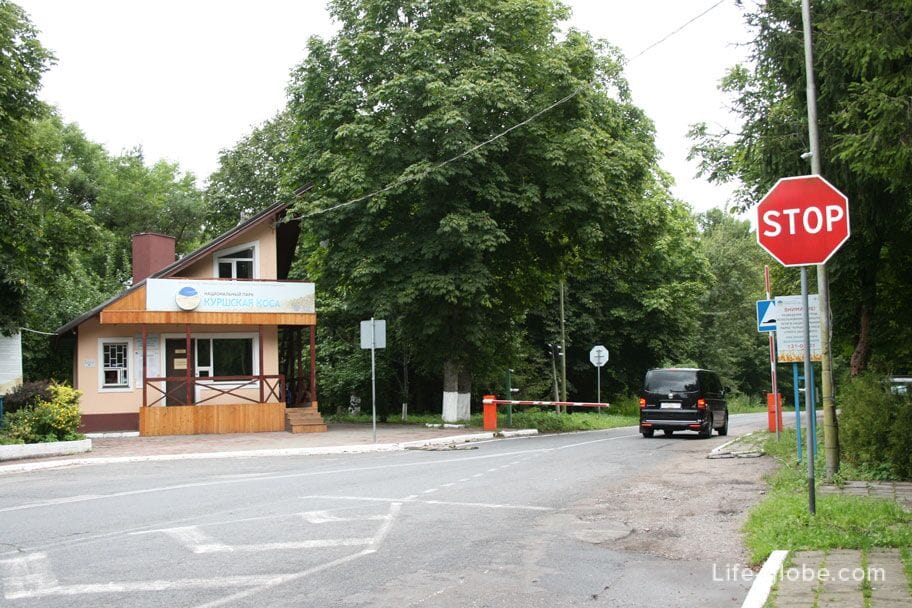
Roadway on the Curonian Spit
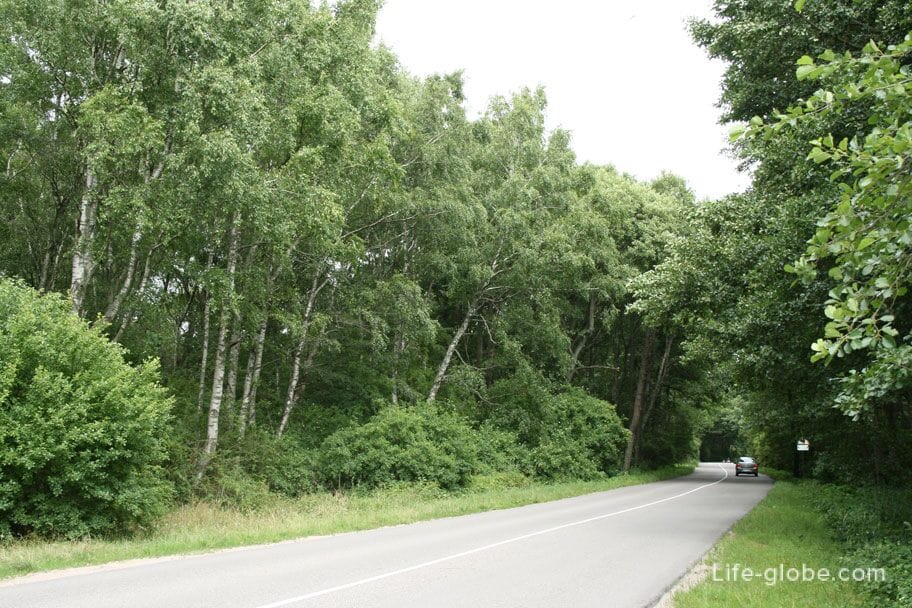
Hotel House of the Fisherman in the village of Lesnoy. A small guest house located on the very shore of the Curonian Lagoon, if desired, you can go on vacation and fishing in it. Very quiet and cozy place.
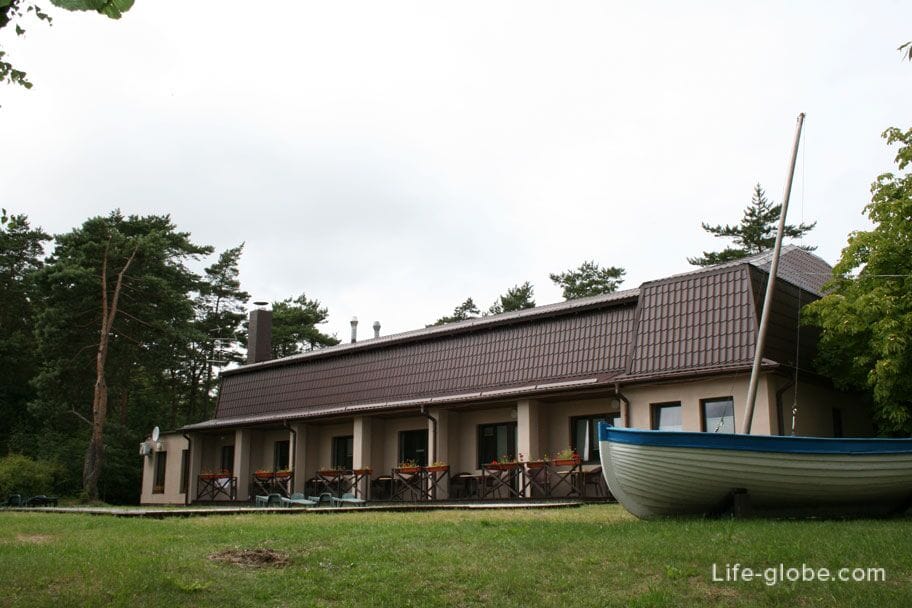
And here is the Curonian Lagoon itself with ducks and beautiful swans. Tourists feed the swans with bread and take pictures.
When you get close to the swans, they begin to spread their wings and hiss frighteningly, perhaps somewhere nearby, their offspring are hiding in the thickets.

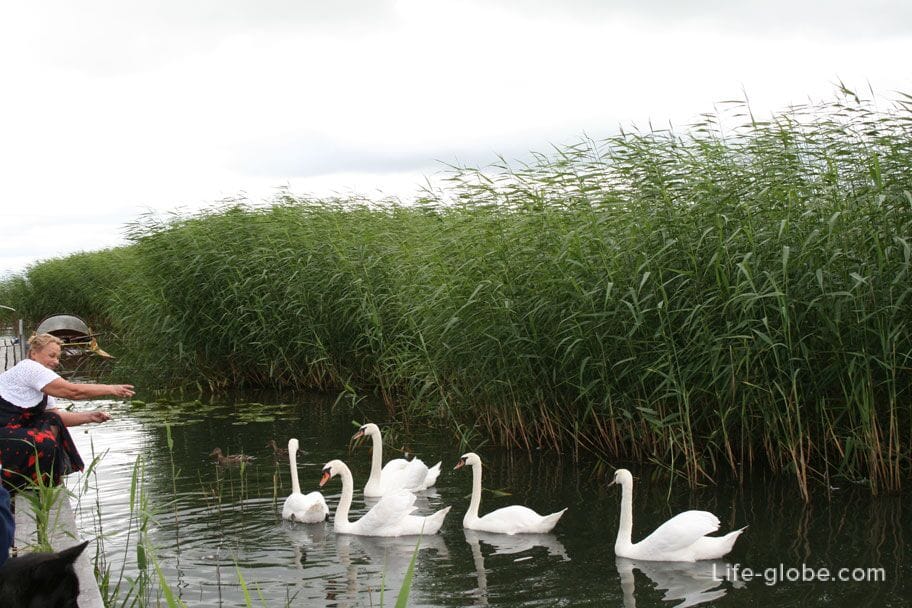
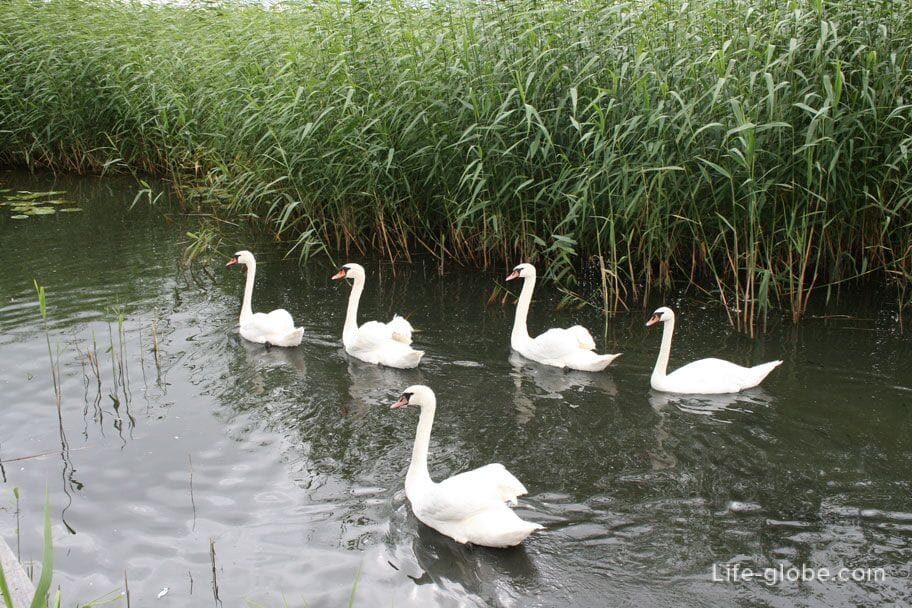
The path leading to the Baltic Sea coast
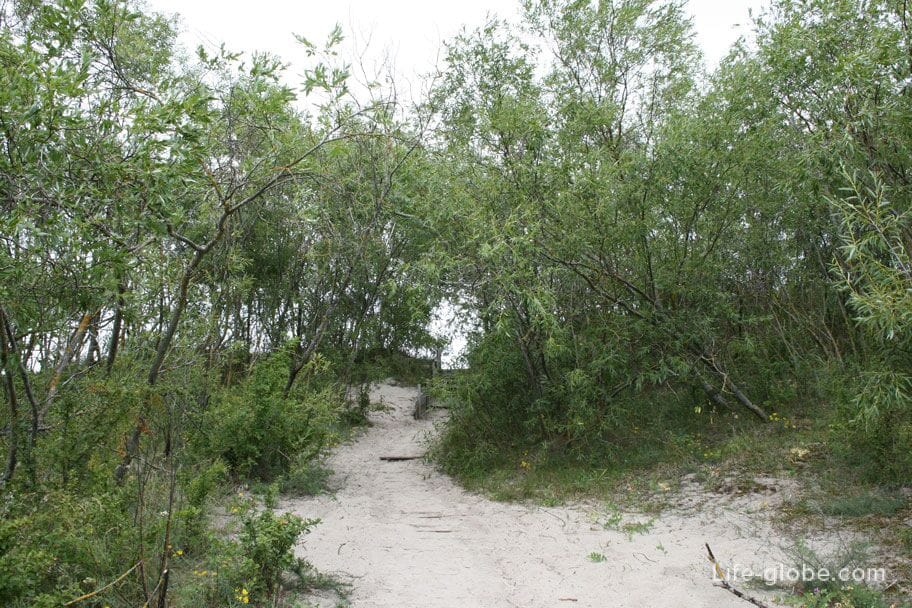
The Baltic Sea coast with sandy beaches. In warm weather, you can swim.
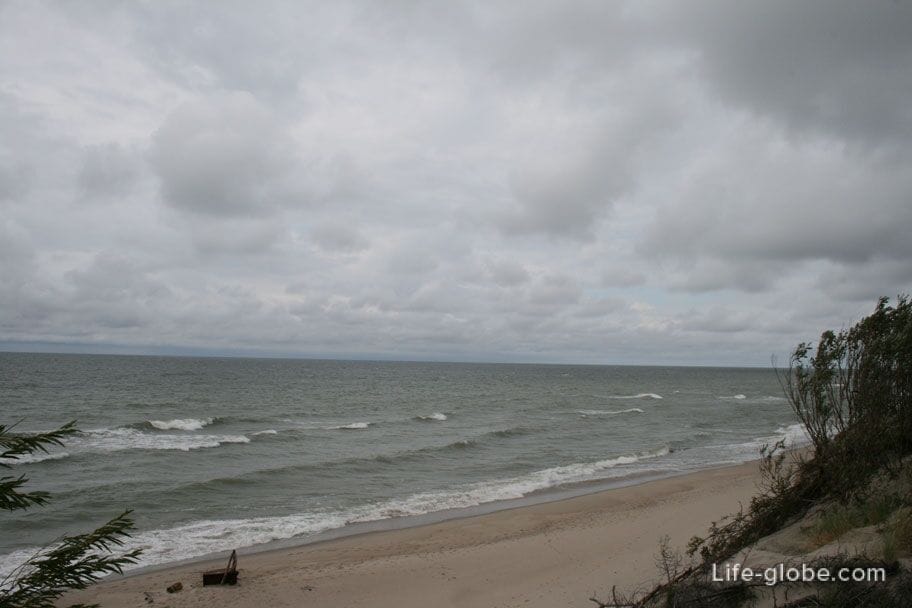

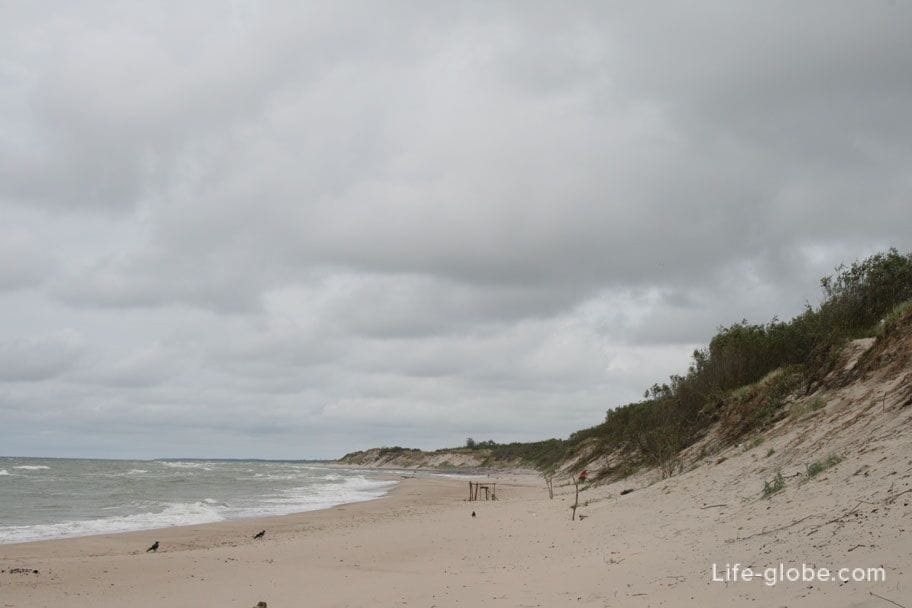
On forty-eight kilometers of the spit, in addition to the unique landscape, there are also world-famous sights, which tourists from all over the world go to see.
It's just a pity, this first place was given to him only because of such extensive advertising. Since this forest did not meet our expectations. A few trees really have curved trunks, but mostly it is an ordinary forest belt of coniferous trees, but a little curved, but thin, and that's all. Apparently, in the shooting, the same couple of other trees were snatched out of the entire abundance of the forest and all this was mounted in such a way that it turns out quite exciting reports.
The Dancing Forest is located 37 kilometers from the city of Zelenogradsk, on the side of the Curonian Lagoon. It is a walking route with a length of 0.8 kilometers.
Near the entrance to the forest there is a large parking lot with souvenir shops and cafes.
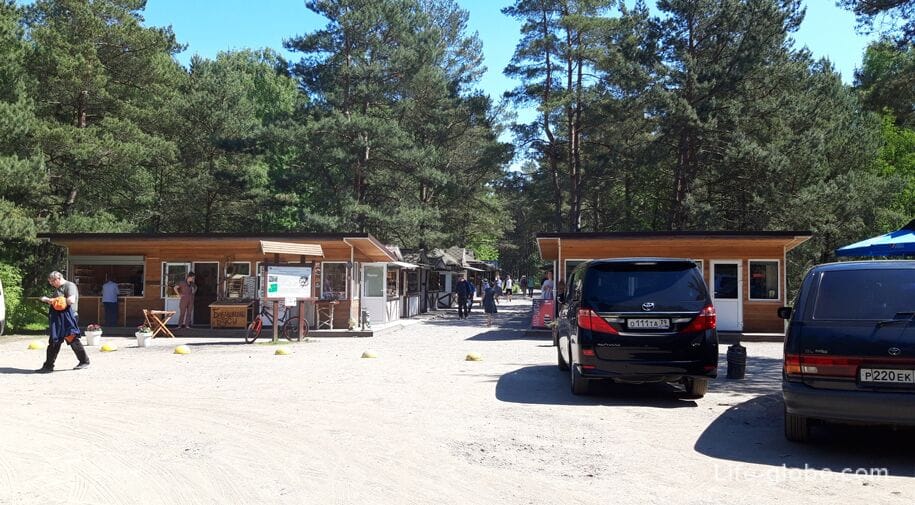
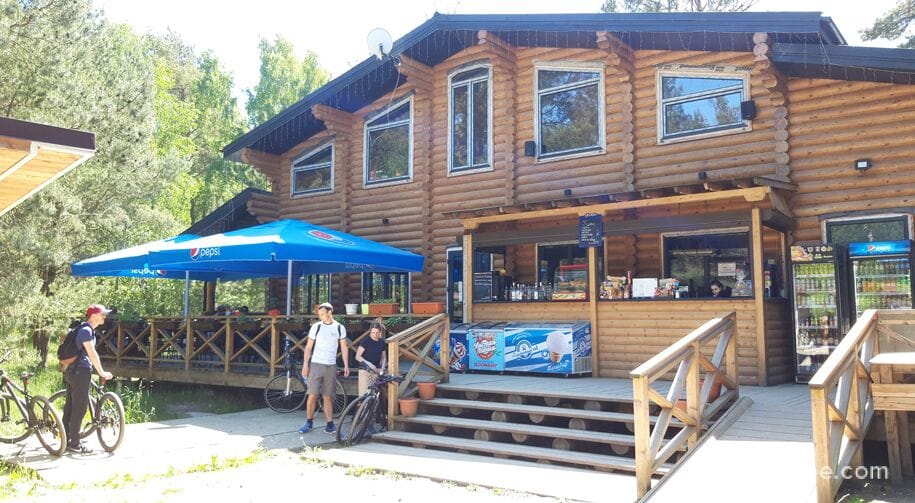
We go further and go out to the green forest. The tree trunks are green.
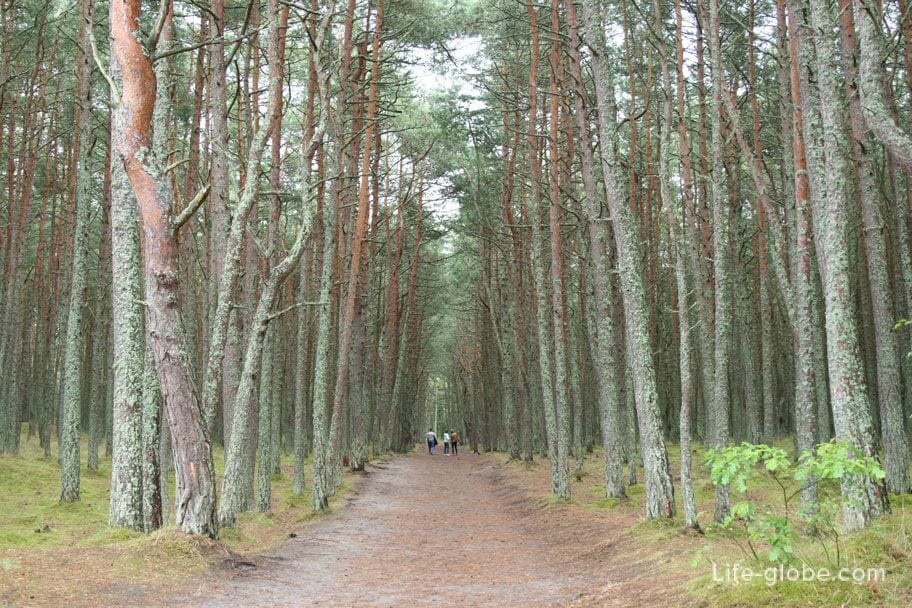
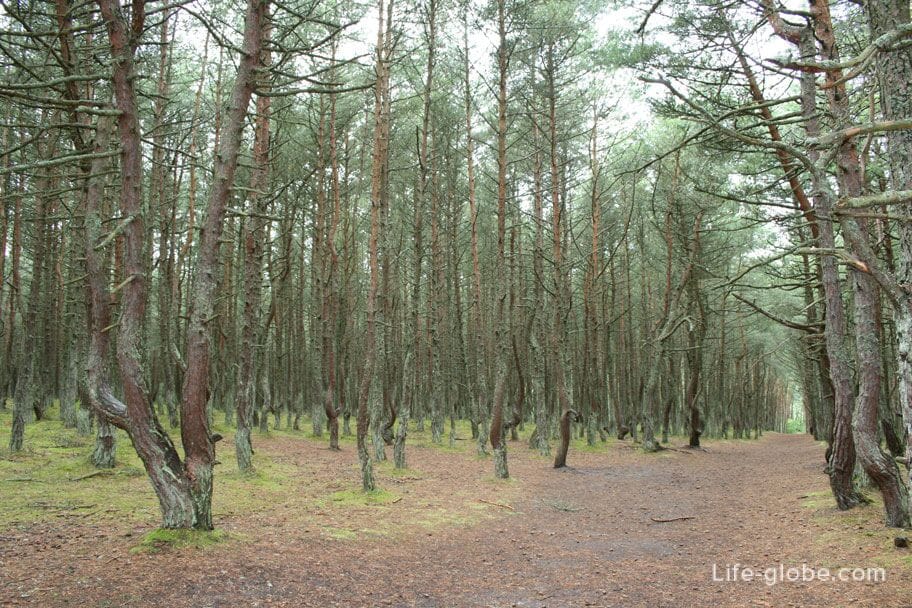

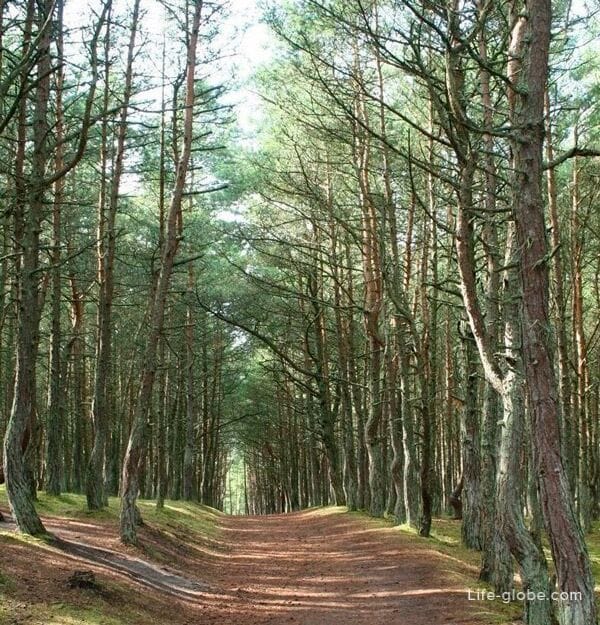
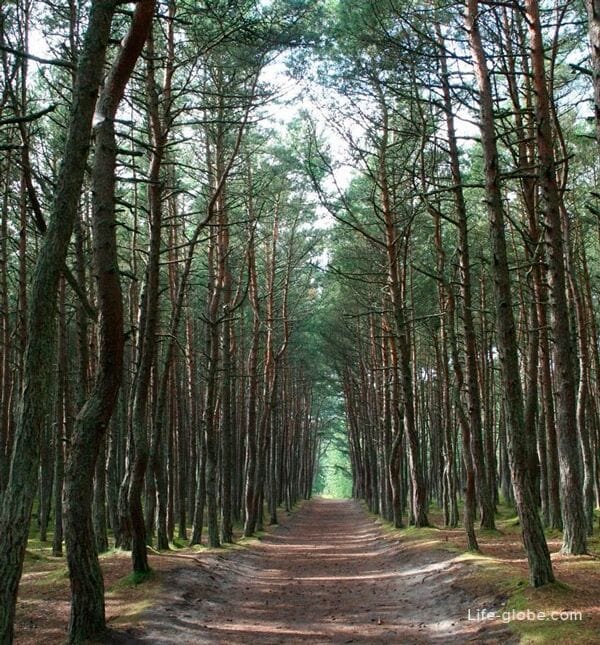
While walking, we rest against the decking of tourist paths. And here it is, such a famous Dancing Forest.
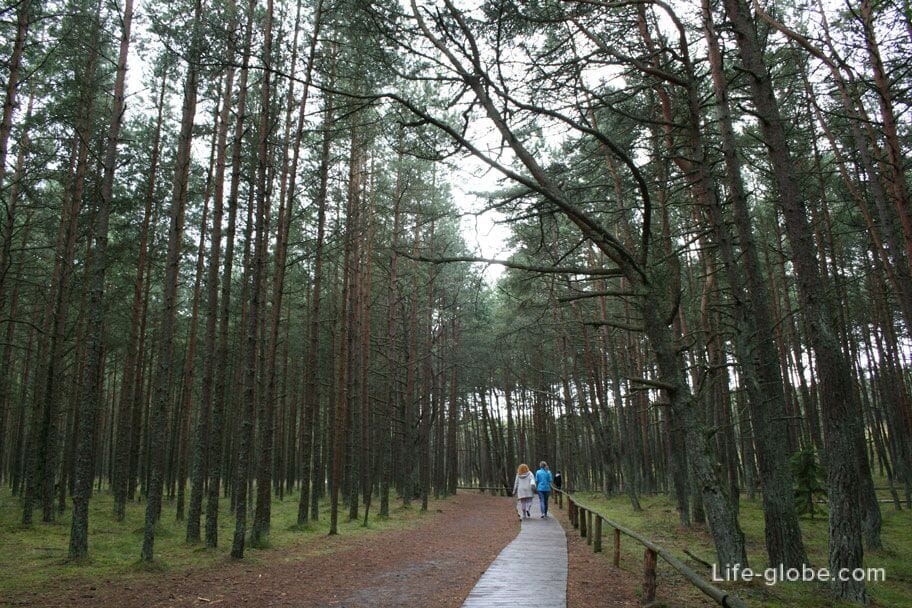
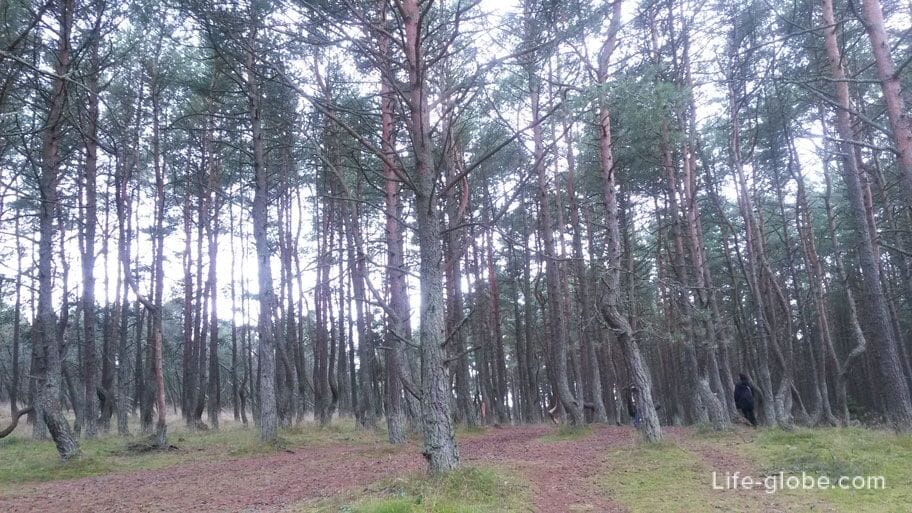
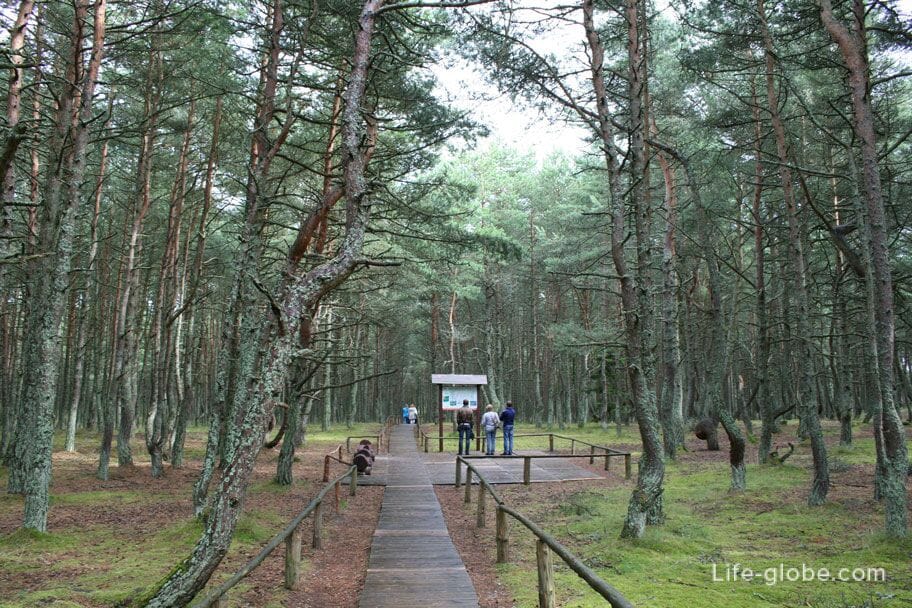
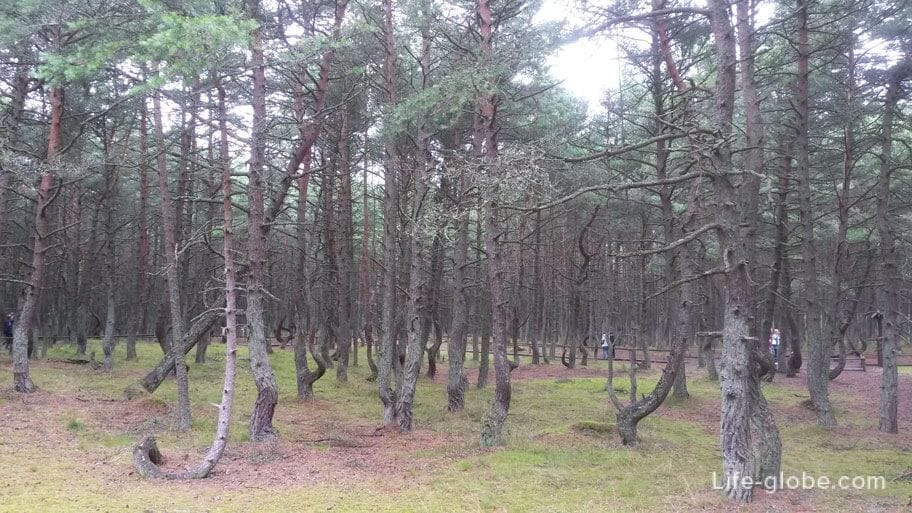
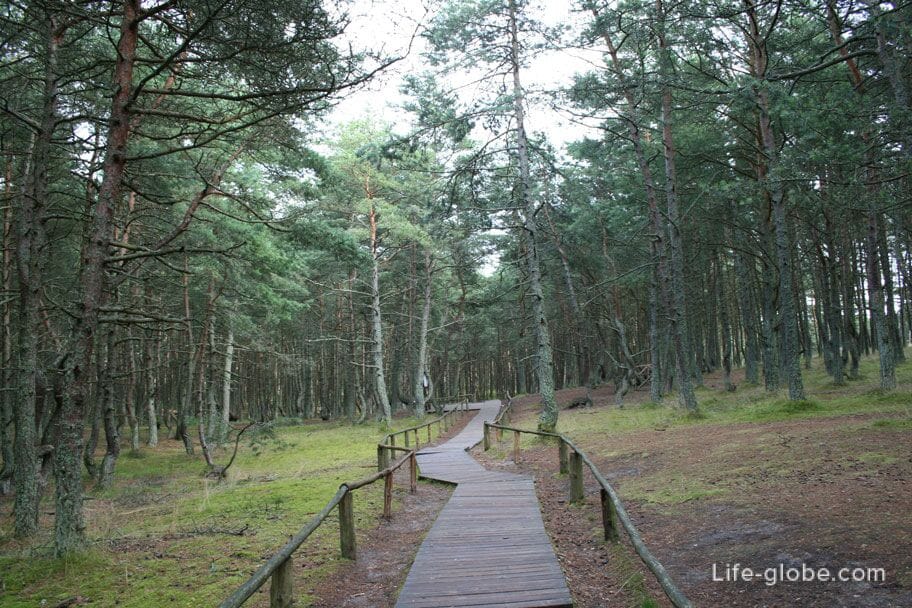
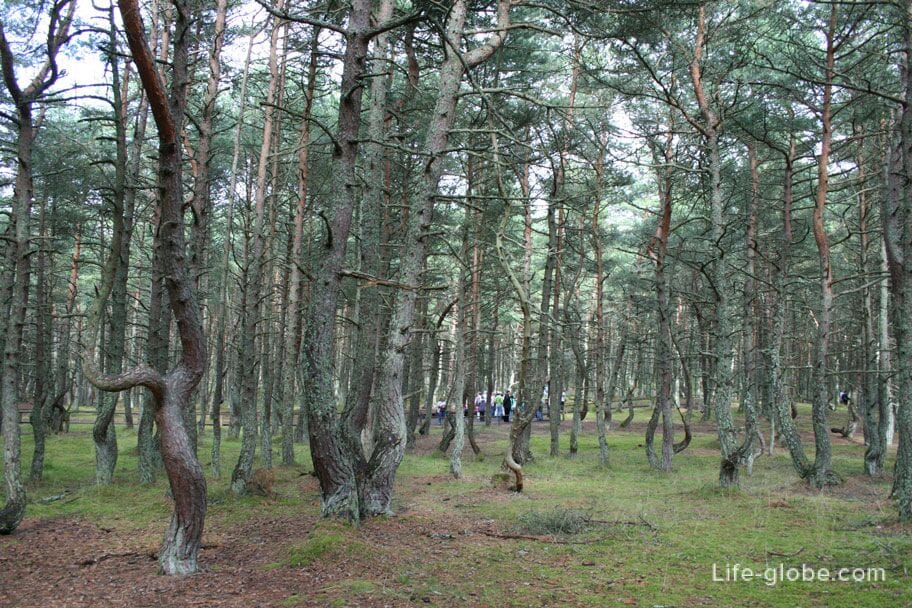
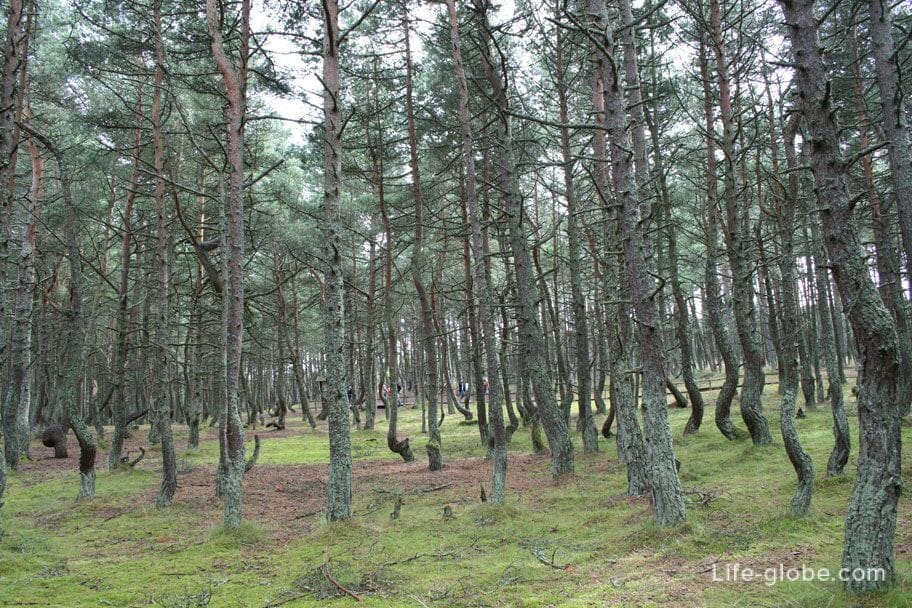
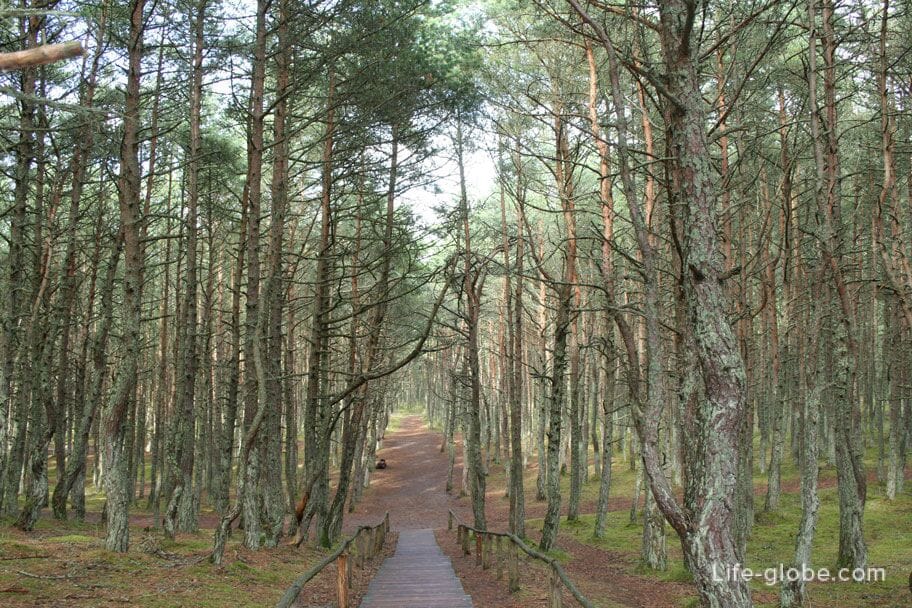
In fact, there are very few so-called "dancing" people with zigzag tree trunks in the forest, all of them can be counted on the fingers. The most curved trees are surrounded by wooden fences. This is done so that tourists do not wipe the bark when photographing their loved ones near the trees, this leads to the death of trees.
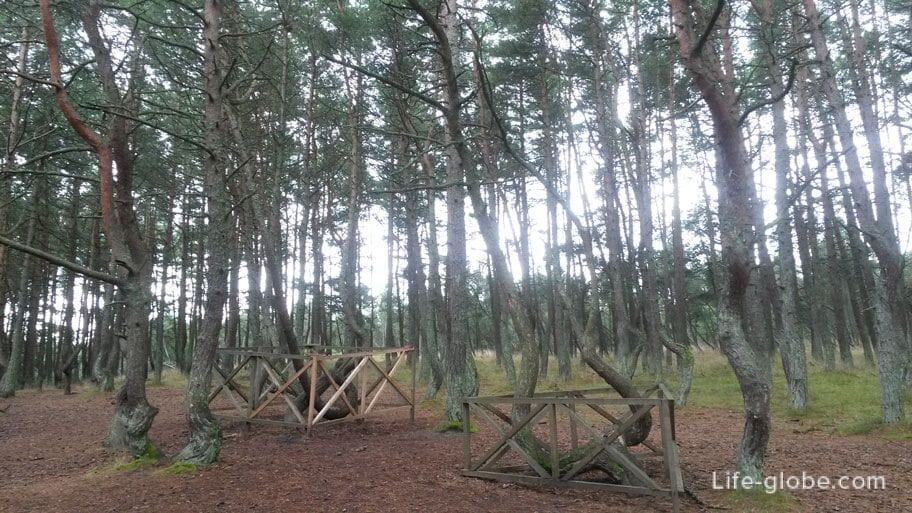
Poor wood, polished to a shine from the touch of hundreds of thousands of tourists

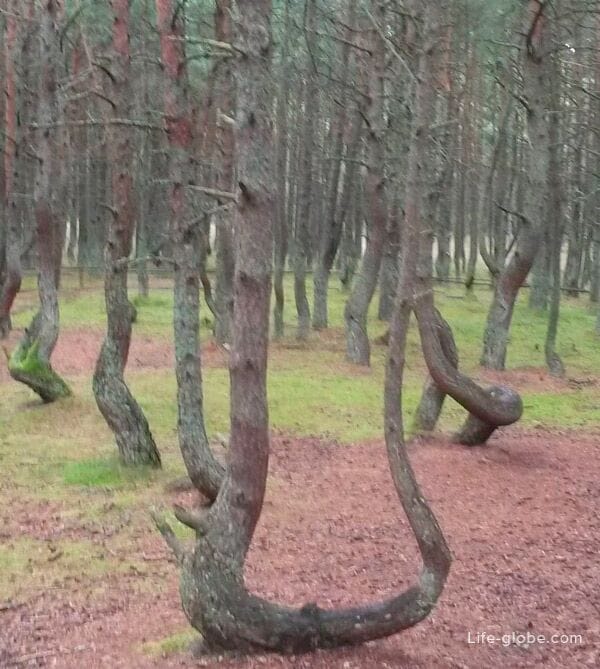
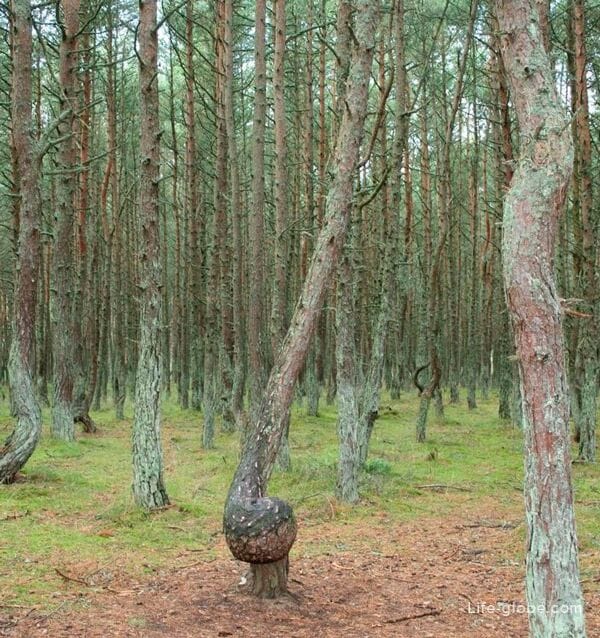
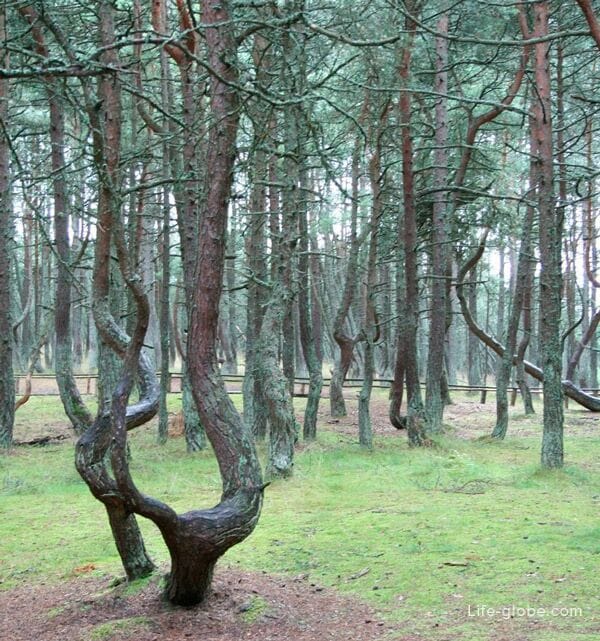
Speaking of wiping the bark and the death of trees. Along the perimeter of tourist paths there are such warning signs. However, signs and fences have little effect, tourists still step over all the fences in droves and run to hug trees for the sake of a home photo archive.

All the trees in the forest have thin and curved trunks, this is due to the unique landscape of the spit. The fact is that the body of the spit consists of sand, which is covered only with a thin (several centimeters thick) vegetable layer. That is why all vegetation receives little nutrients from the soil and that is why trees have such sinuously bizarre shapes of trunks. Learn more about the Dancing Forest...
This is a visitor center and a museum complex, partially located in the open air. It is located on the 14th kilometer of the Curonian Spit. Entrance is paid.
The museum complex includes an open-air museum and two main closed buildings-complexes.
On the territory of the open museum there are: a village from the Viking age "Ancient Sambia", an aviary with ungulates, an arboretum of cultivated plants, a pier with a boat, an interactive complex, a children's playground and a collection of wooden sculptures.
In the closed complexes of the museum you can see:
- the hall of nature, which tells the history of the formation of the spit and the formation of its landscapes, about its animal and plant world, nature protection, sand disasters that occurred on the spit;
- hall of ethnography, will tell about the life and traditional occupations of the population of the Curonian Spit before the Second World War;
- hall of the history of forestry on the Curonian Spit.
Also in the museum you can get acquainted with scientific research conducted on the Curonian Spit - ichthyology and ornithology, the activities of the AtlantNIRO Research Institute and the Biostation of the Zoological Institute of the Russian Academy of Sciences. And of course, the history of gliding sports on the Curonian Spit.
Near the museum there is a parking lot, benches with souvenirs made of amber and wood, and a kiosk with snacks - tea, coffee, snacks, hot dogs, ice cream.
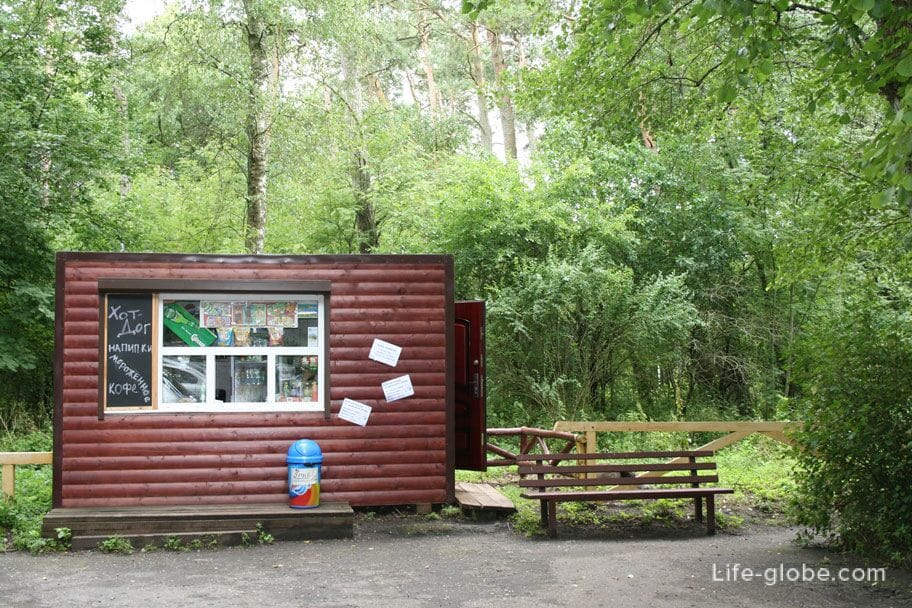
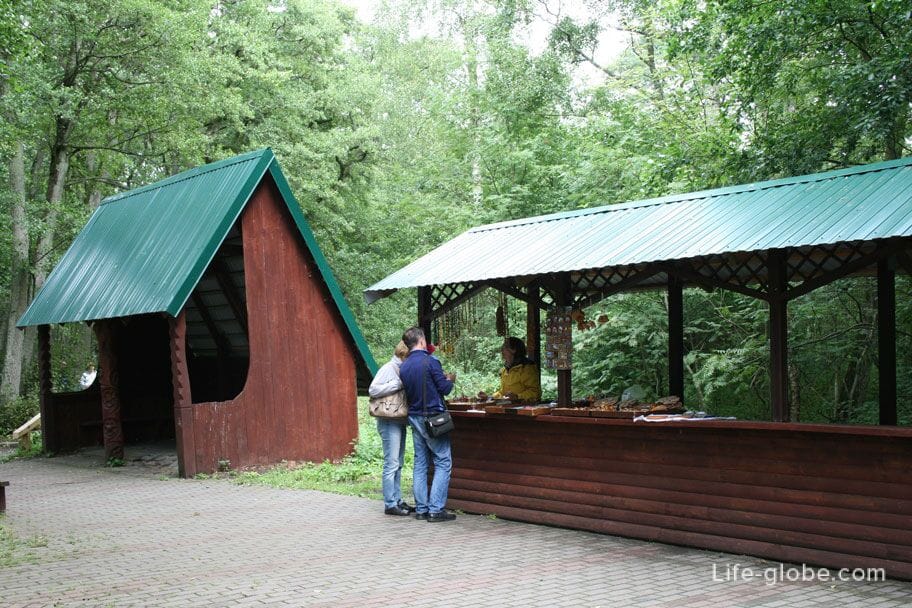
It was here that we met a wild boar. He didn't look wild at all, but very tame. At first, the boar slept peacefully, then woke up, and the tourists began to feed it with bread and tomatoes. He ate it by both cheeks, almost from his hands.
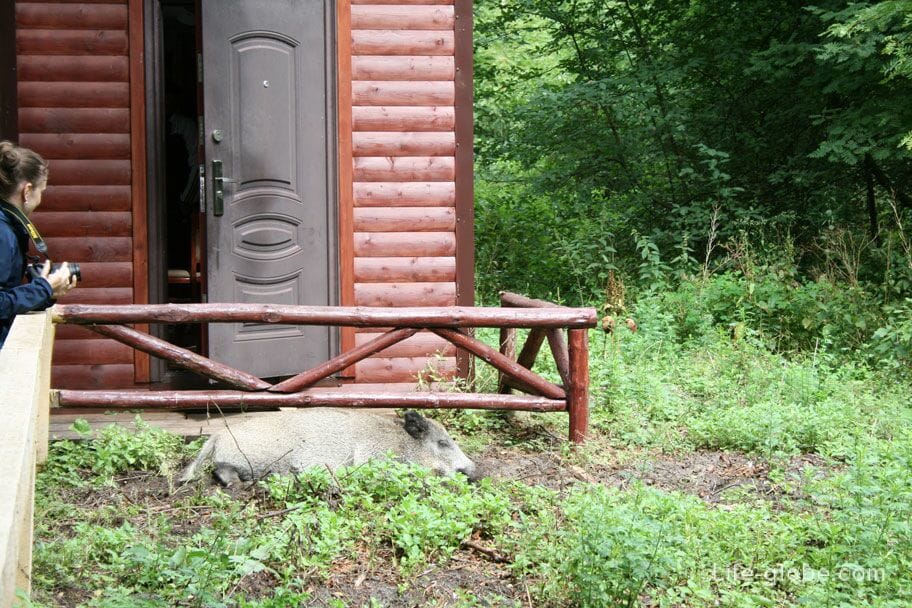
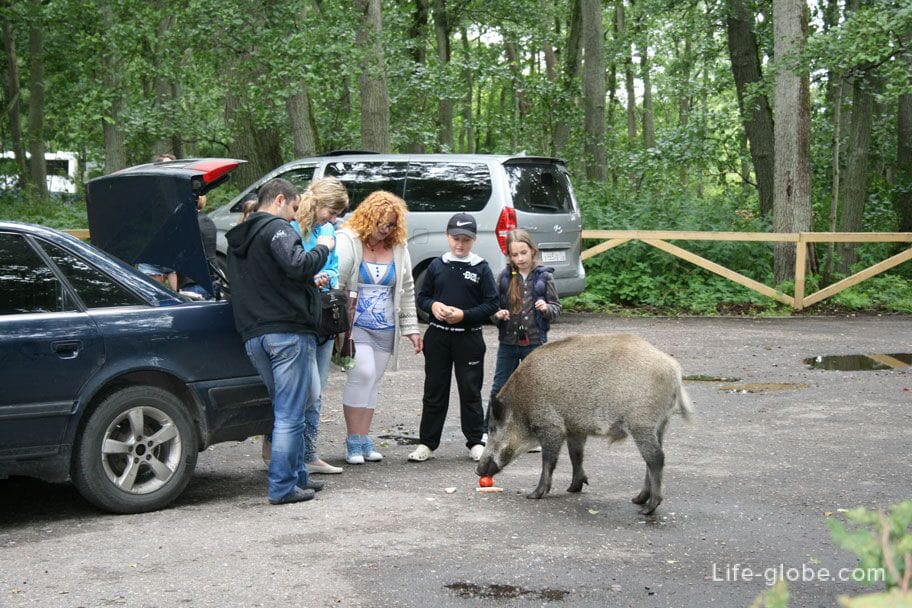
The height of Efa, a 2.8-kilometer hiking route, is located on the 42nd kilometer of the Curonian Spit from the Curonian Bay on the Orekhovaya Dune (Petsh), near the village of Morskoye.
Petsch is one of the highest dunes in Europe, its height is 62 meters.
At the foot of the hill there is a parking lot, souvenir shops and tents with gifts from the Baltic Sea and the Gulf of Kursk.
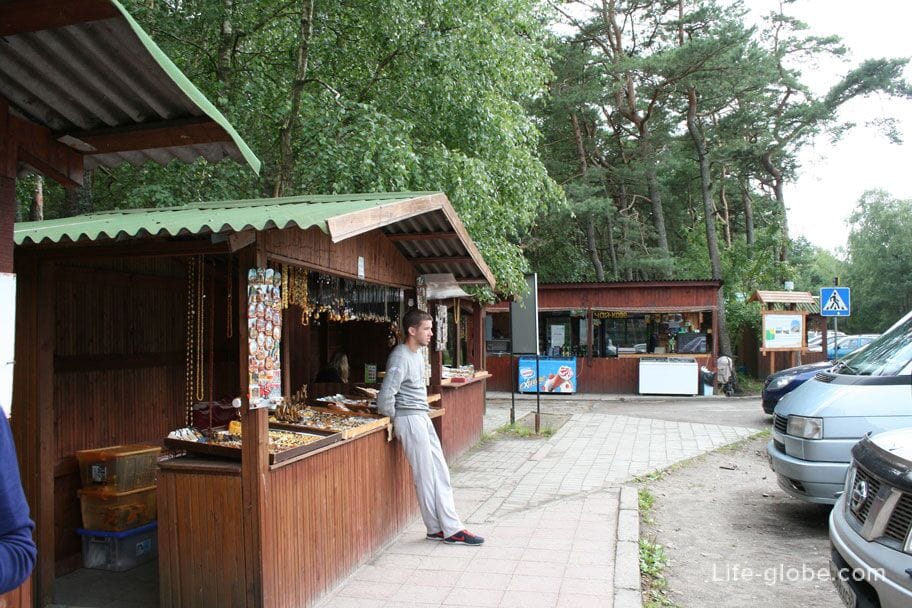
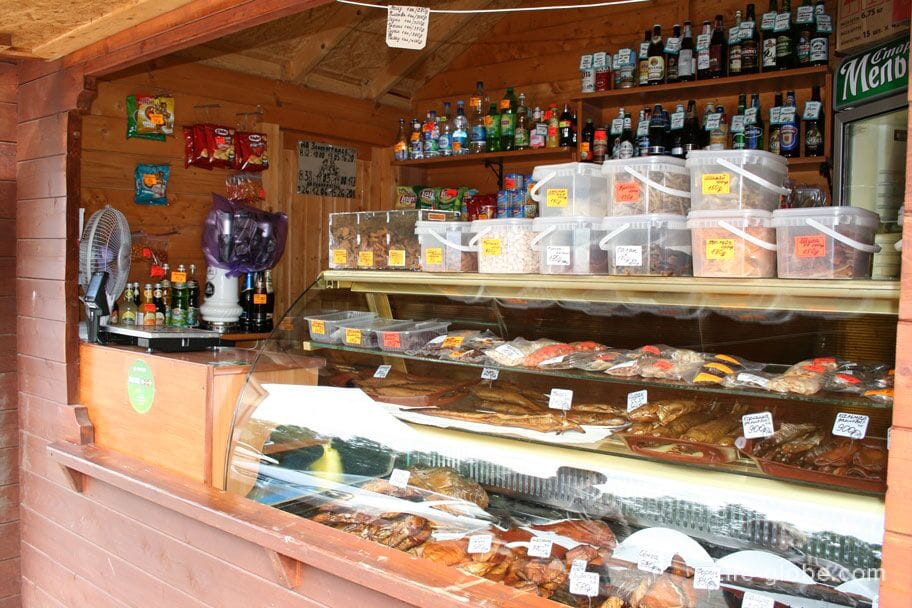
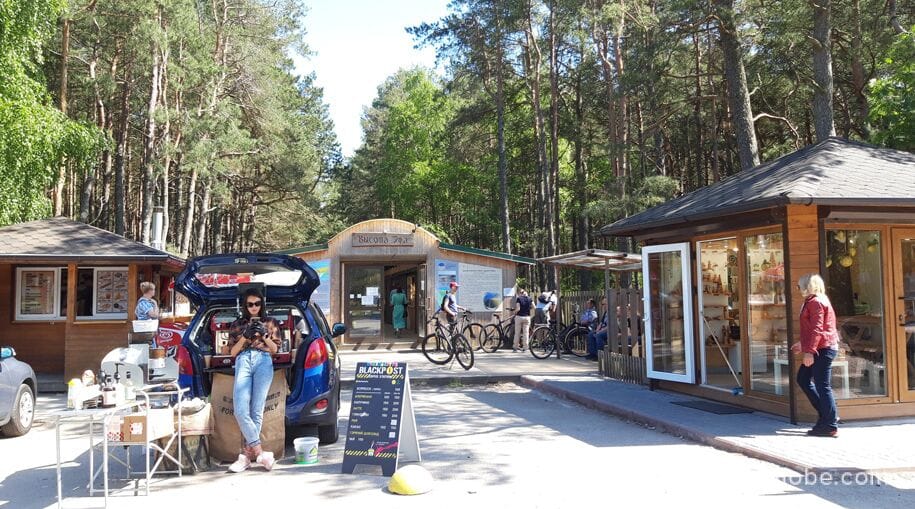
We leave the car in the parking lot and go along the tourist decks to gain altitude.
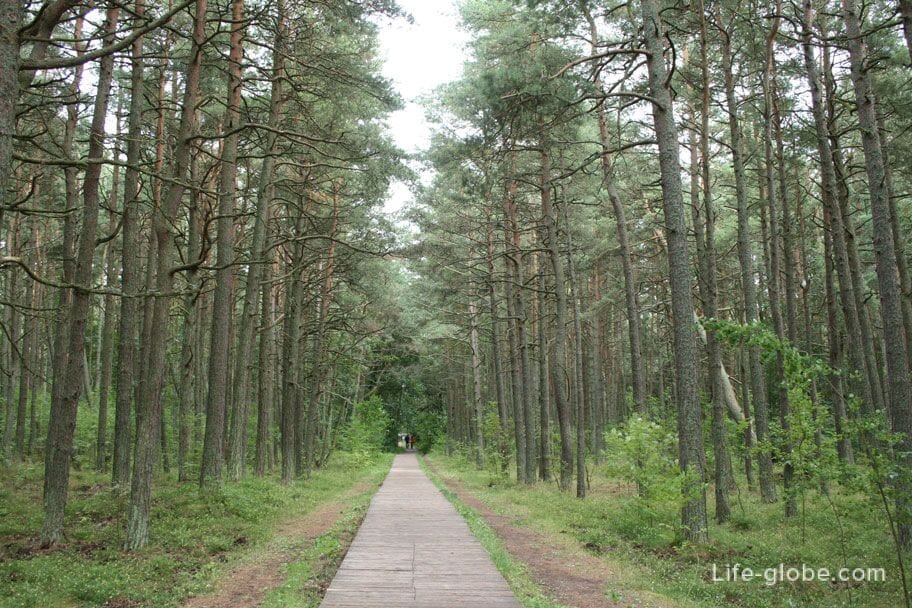
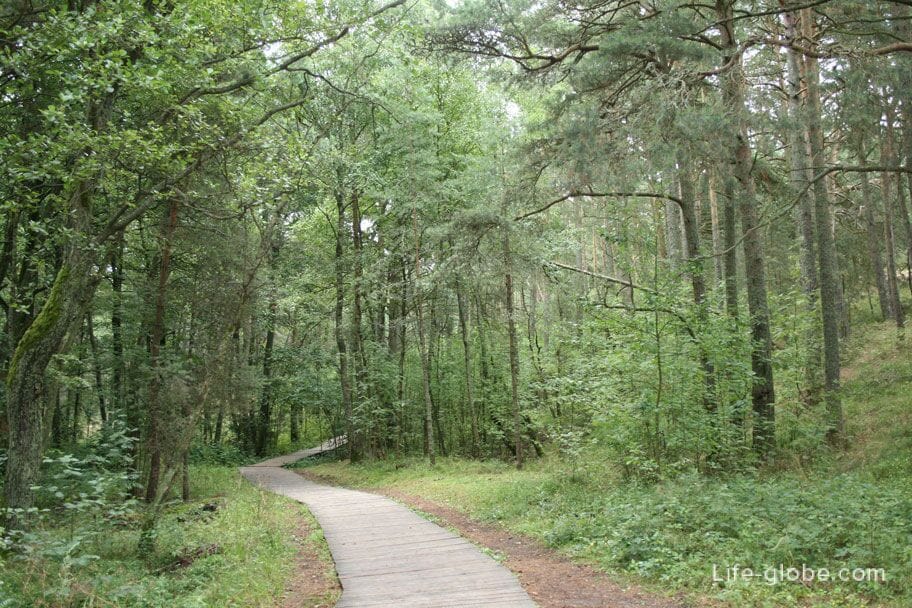
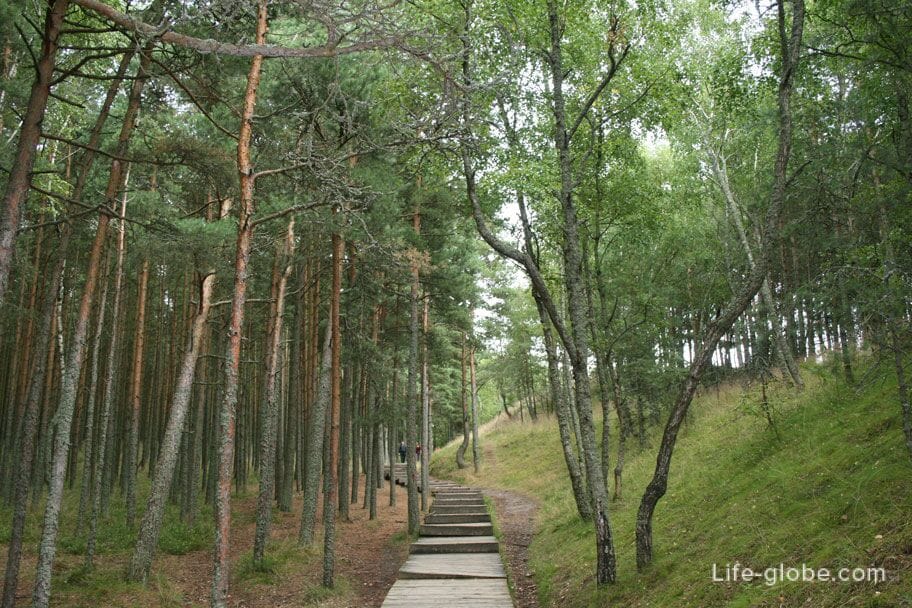
There are observation decks at the height, which offer beautiful panoramic views, giving the opportunity to get acquainted with the variety of landscapes of the Curonian Spit.
From the observation decks, you can see the Baltic Sea and the Curonian Lagoon, areas covered with forest and massifs of loose sands, as well as the village of Morskoye.
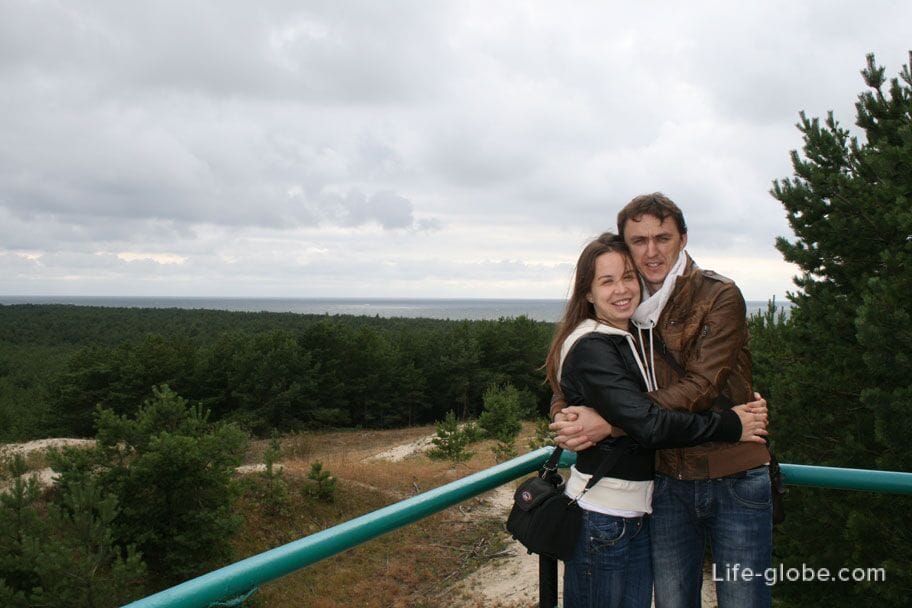

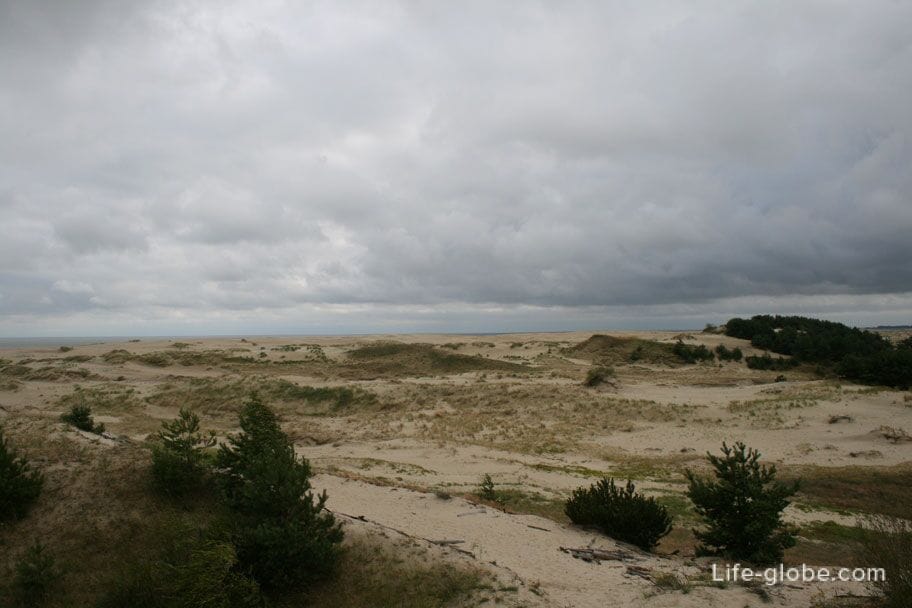
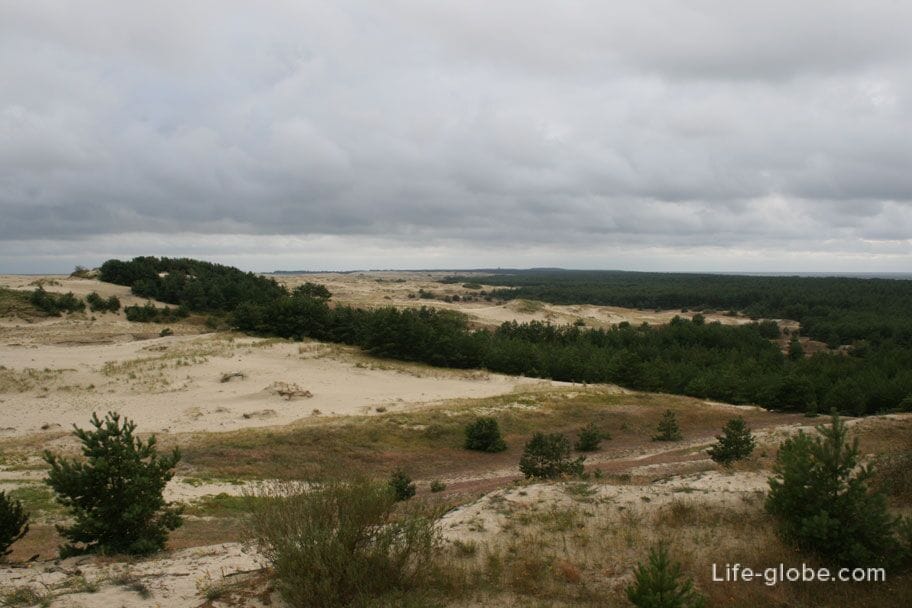
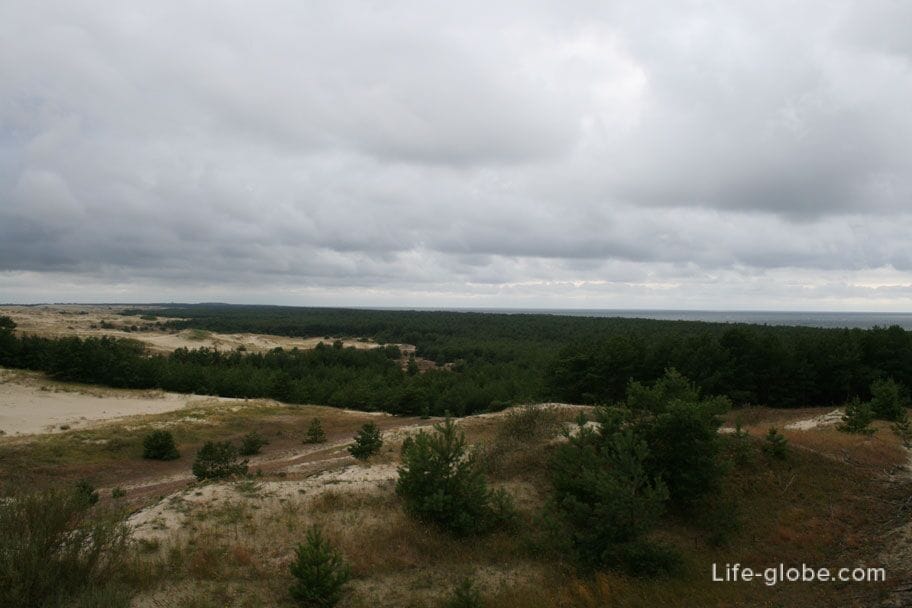
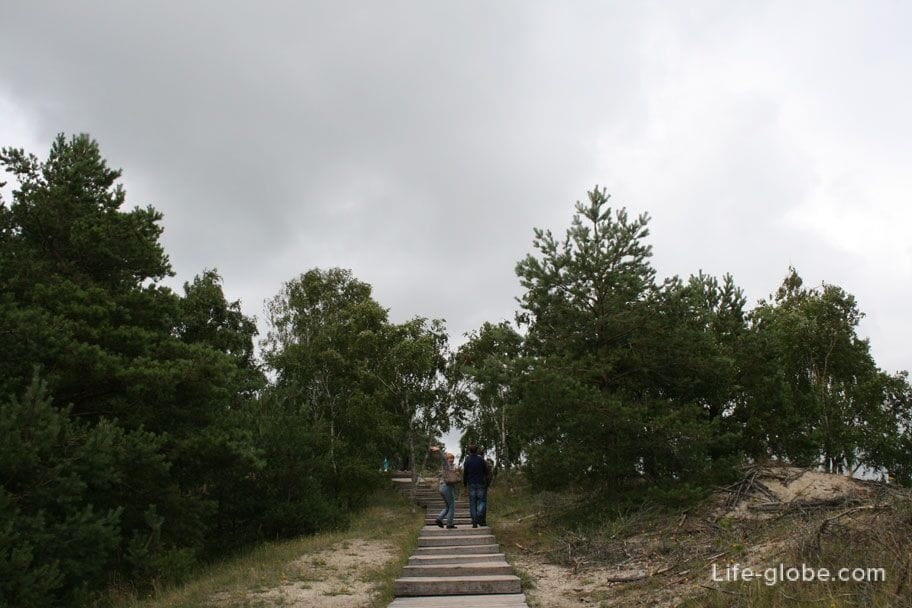
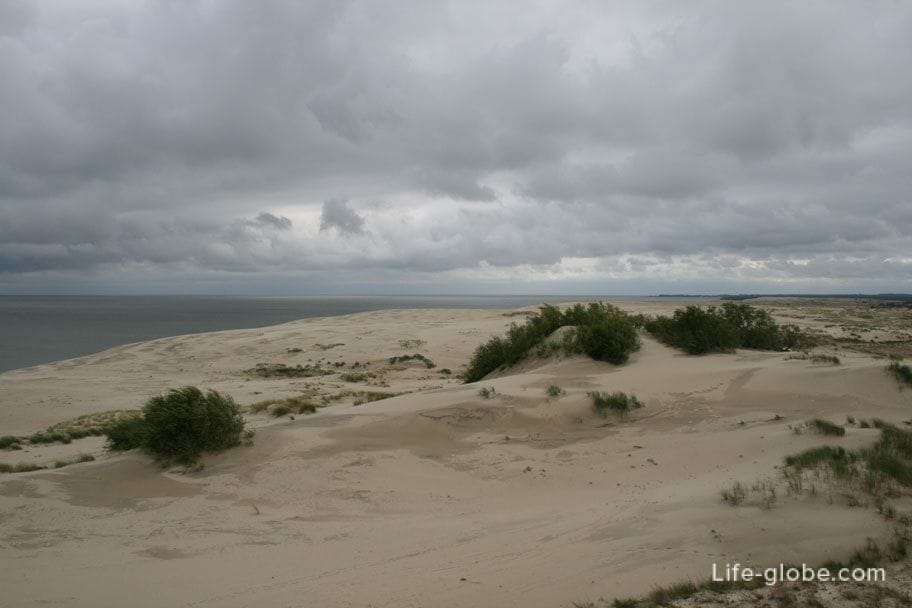
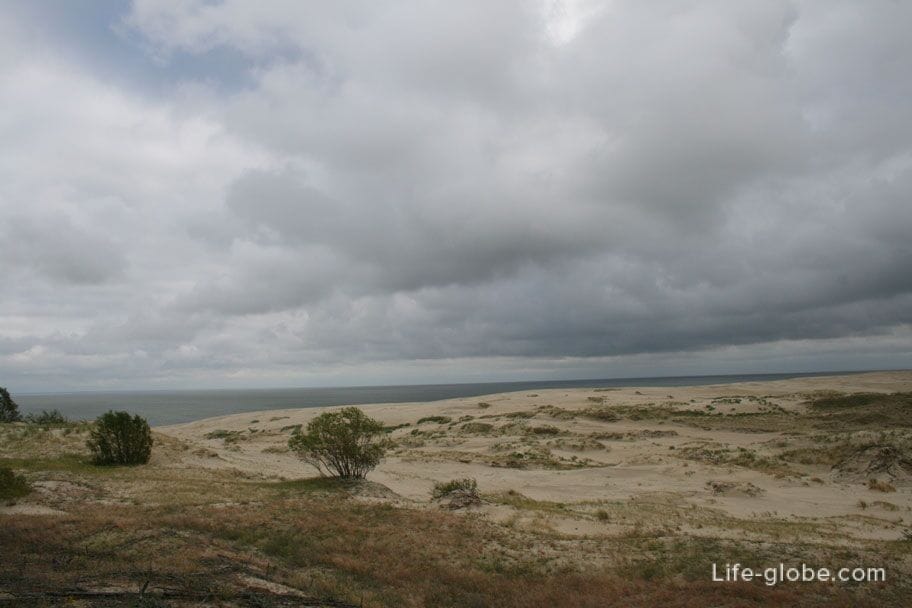
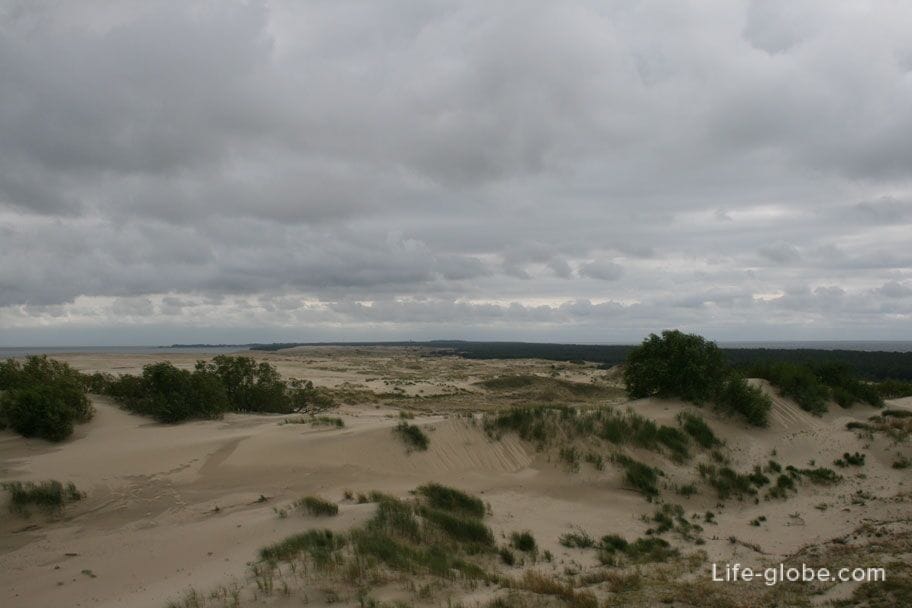
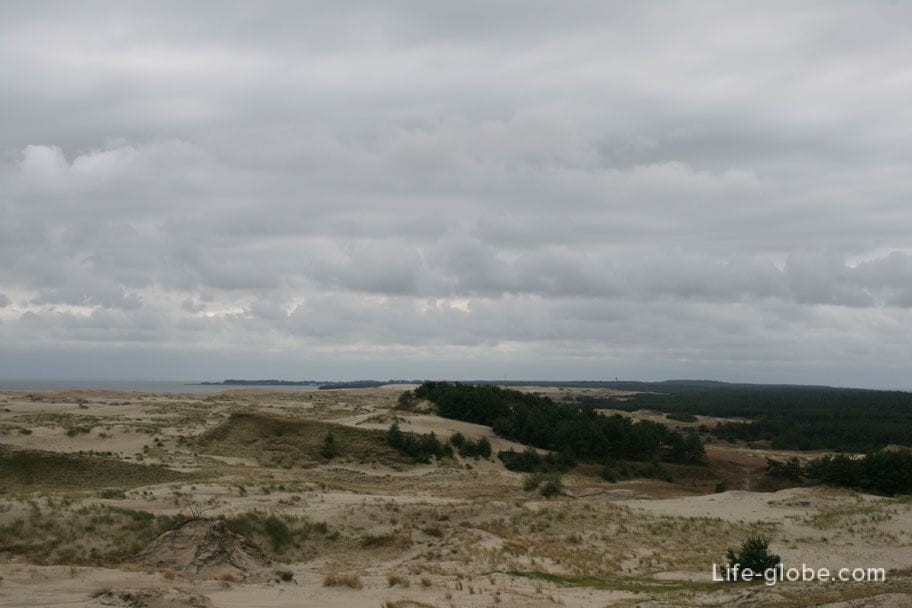
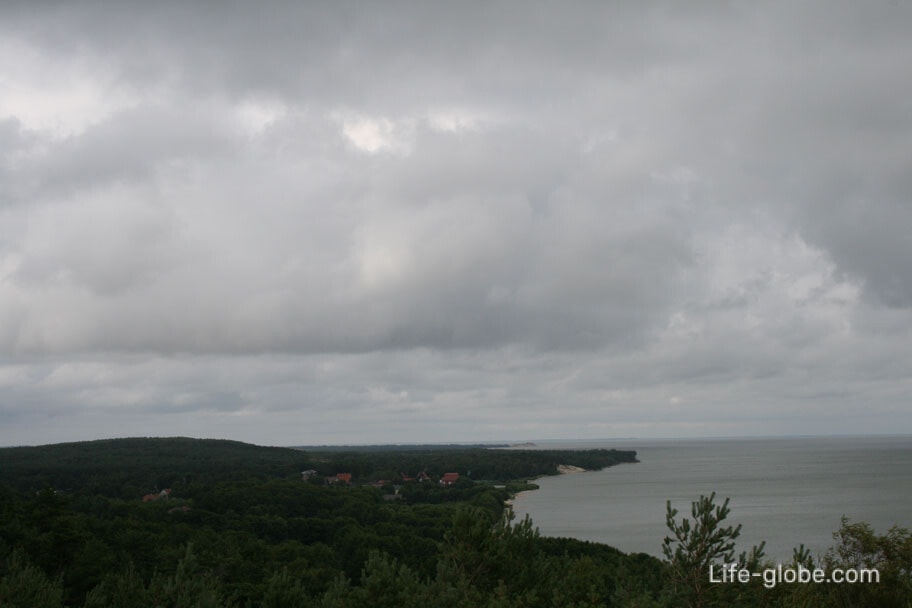
On the one hand, the Kursk Bay was quiet and calm with fresh water. And on the other, just a few hundred meters from the beginning of the route, the raging and salty Baltic Sea.
It would seem that such a small distance, some ten minutes of walking, and already how different the nature is, and the weather is. This is a truly unique natural phenomenon! Learn more about the height of the Efa, observation decks and access to the Baltic Sea...
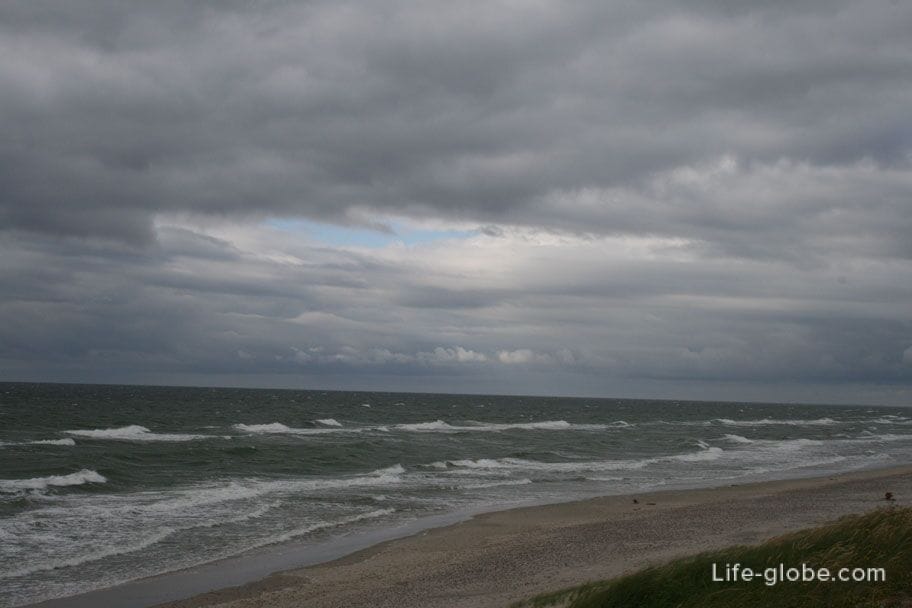
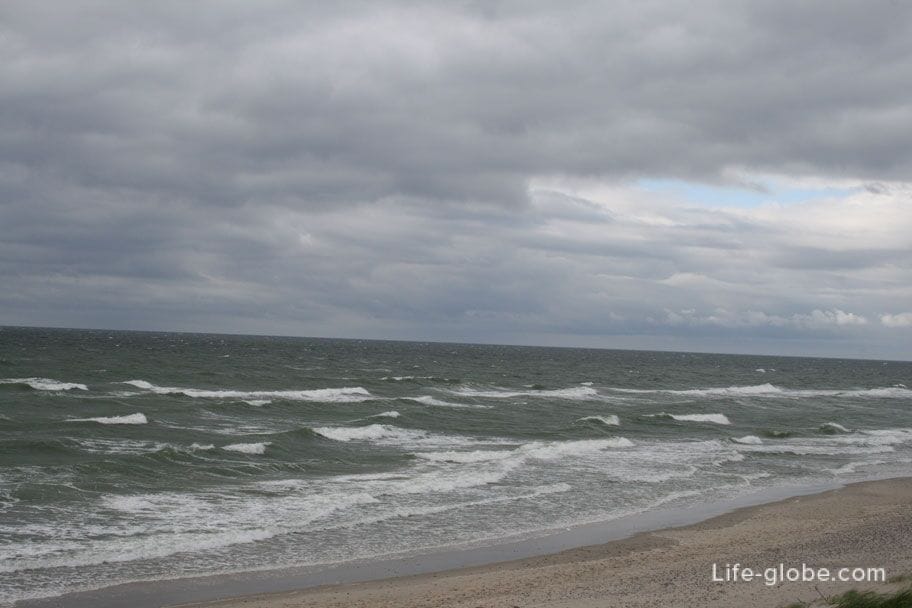
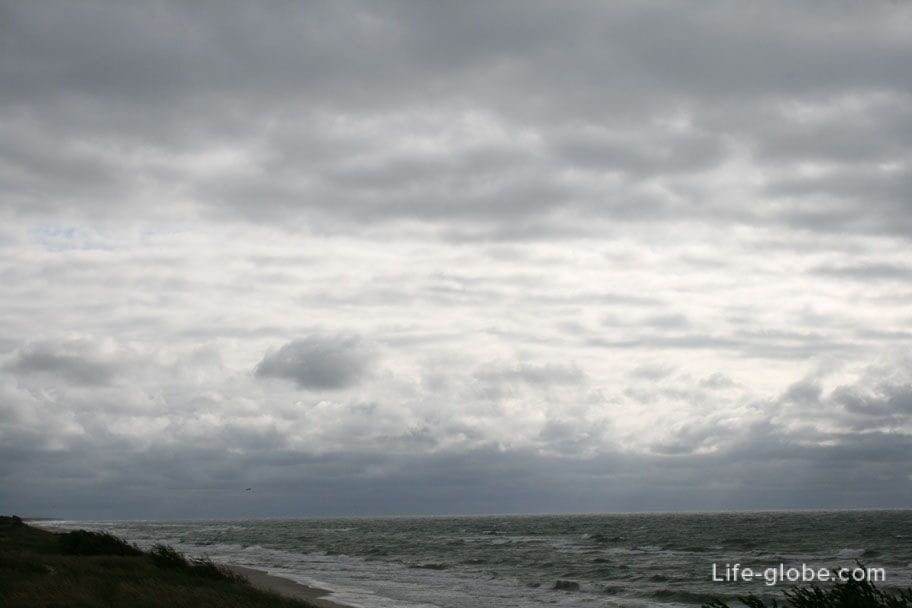
On the territory of the Curonian Spit, there are also several other attractions. We did not manage to make a photo report of which this time.
A walking route with a length of 2.8 kilometers, laid in the basal part of the spit on the 7th kilometer of the path.
A special feature of the route is the passage of the route through centuries-old arrays of coniferous forests and old plantings of introduced species, primarily giant thuja.
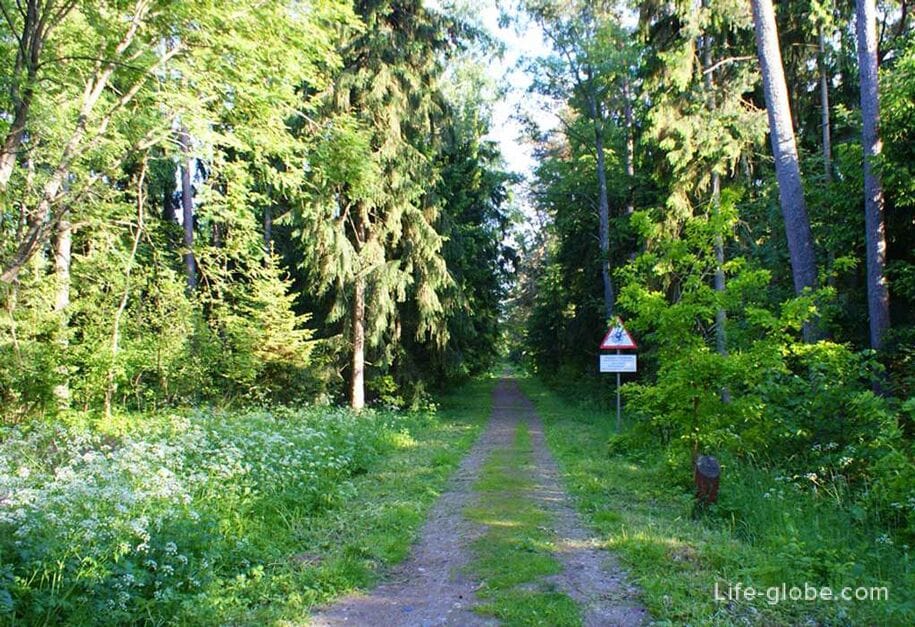
Fringilla, which is also a walking route with a length of 0.5 kilometers, is located on the 23rd kilometer of the spit. It is a field stationary Biostation of the Zoological Institute of the Russian Academy of Sciences and is a division of the world's first ornithological station founded in the village of Rybachim (formerly Rossitten) in 1901.
As we have already noted earlier, the Curonian Spit serves as a migration site for millions of birds. Migration occurs in autumn and spring. Therefore, the ornithological station does not function year-round, but seasonally, during the migration of birds. It serves as a bird trapping point. The station workers pull huge nets, thereby catching, then registering, ringing and releasing the birds. After that, with the help of banding, scientists study the flights of birds.
By the way, the hospital received the name "Fringilla" in honor of one of the birds, more precisely, a finch. Finch in Latin means "Fringilla".
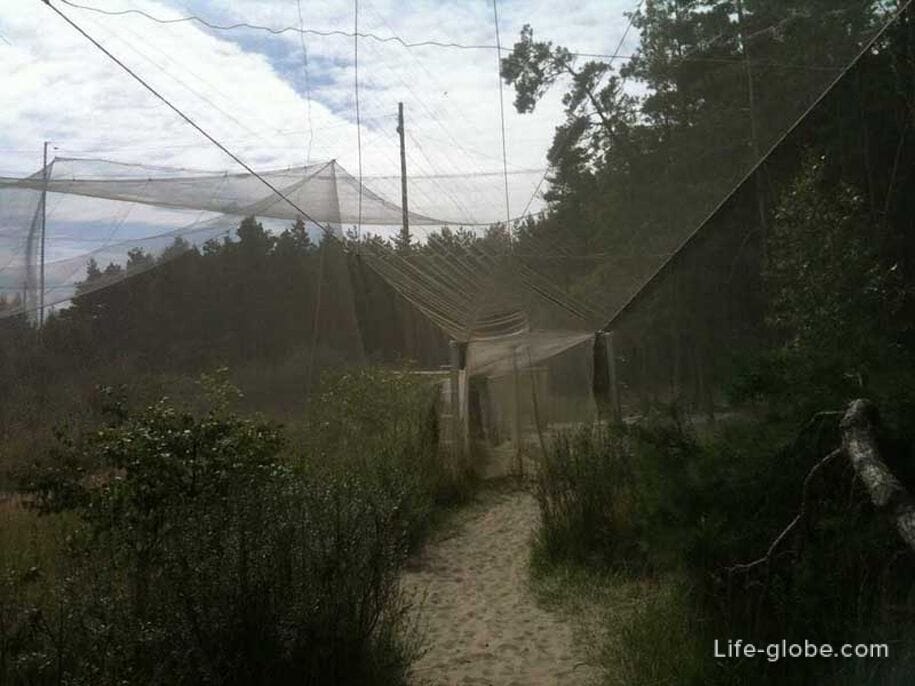
A walking route with a length of 3.5 kilometers, which is laid on the 31st kilometer of the Kursk spit.
The height is located in the oldest part of the Kursk Spit within the glacial island of Rasite on the Bolotnaya dune and is its highest point. It is a dune and is named after the forester of the Konigsberg Forest Management - Muller.
At the highest point of the altitude (44 meters above sea level) there is an observation deck. From the observation deck there is a view of another attraction of the Curonian Spit - Lake "Chaika". Learn more about the Mueller height...


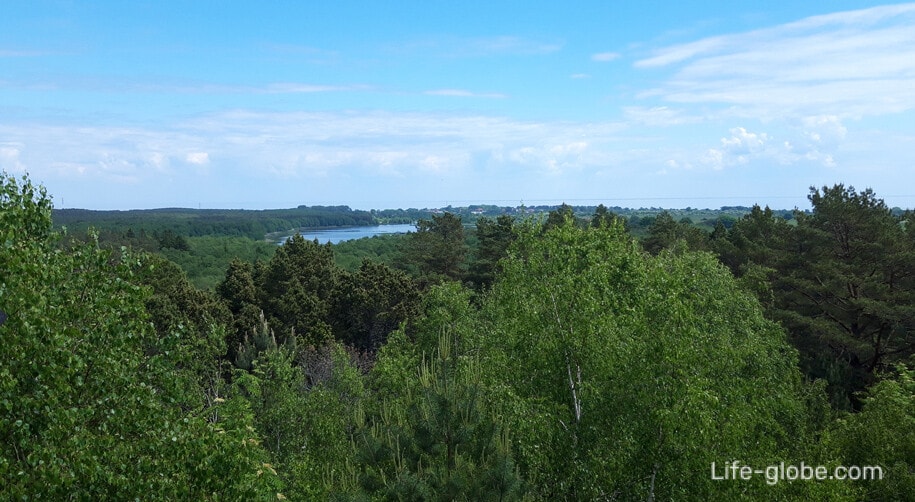
The 4-kilometer walking route is laid on the 46th kilometer of the way.
The lake is relatively young, so little has been studied. The lake is separated from the Curonian Lagoon by a thin sandy strip-a bridge.
The lake is a haven and oasis for waterfowl. Gray herons, ducks, swans, mallards and chomgi especially chose it.
There is an observation deck on a hill, not far from Lake Swan. Learn more about the route of Lake Swan and the observation deck...
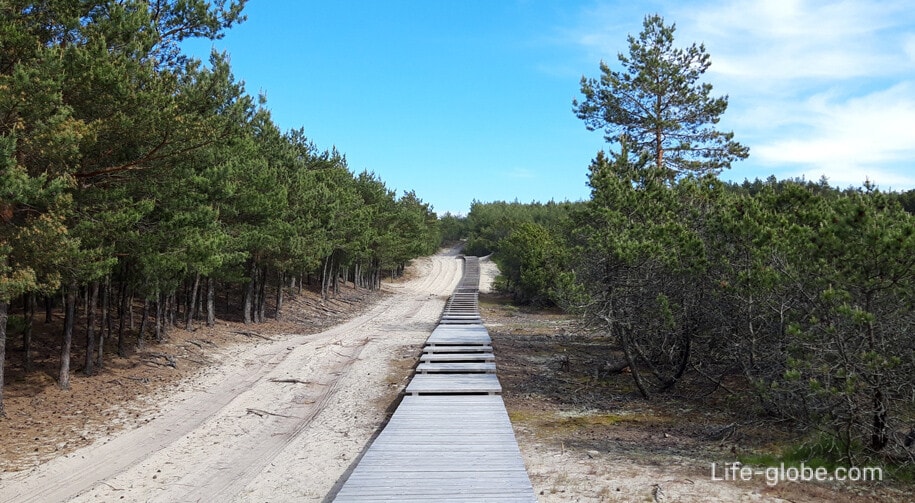
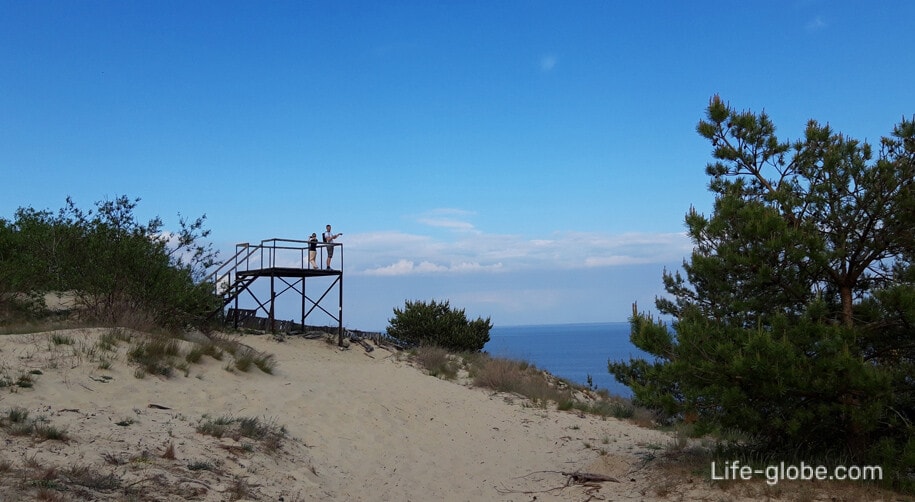
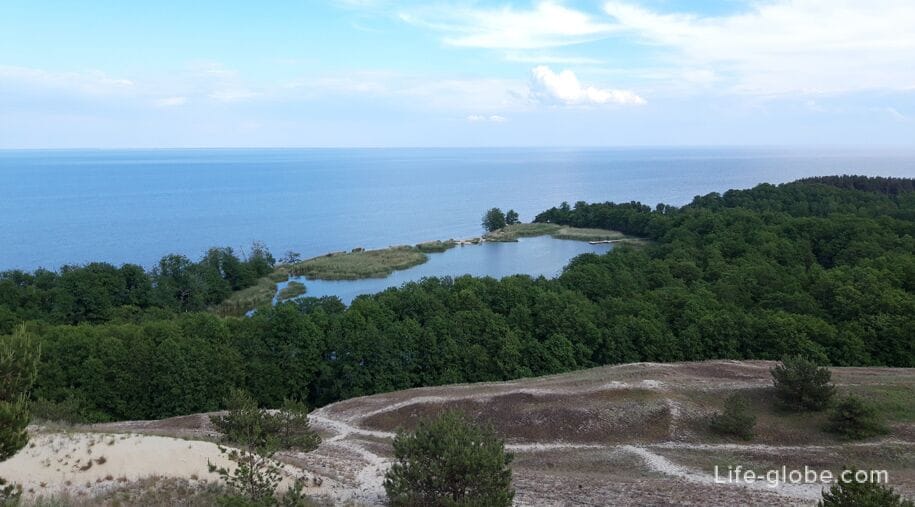
More information about all the sights of the Curonian Spit can be found here →
General guide to the Curonian Spit - here →
You can visit the Curonian Spit with one of the excursions, as well as independently - by car, taxi, bicycle or by bus.
You can stay on the Curonian Spit in the villages of Lesnoy, Rybachy and Morskoe. There are hotels, apartments, holiday homes, camp sites.
All accommodation facilities in the village of Lesnoy can be viewed and booked here
All accommodation facilities in the village of Rybachy can be viewed and booked here
All accommodation facilities in the village of Morskoye can be viewed and booked here